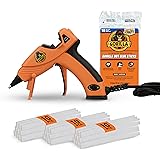Build Your Own Gumball Machine: A Fun Way to Learn Kids’ Physics!
Have you ever looked at a bunch of gumballs and wished you had an amazing, interactive machine to dispense them? As you saw in the exciting video above, building your own gumball machine isn’t just a blast; it’s a fantastic hands-on lesson in basic physics. For parents seeking engaging STEM activities or kids eager for creative play, constructing a custom gumball machine offers the perfect blend of entertainment and education. This unique project transforms simple pieces into a complex marble run, making abstract scientific principles tangible and incredibly fun.Instead of just watching gumballs drop, imagine them bouncing, spinning, and racing through a track you designed. This DIY gumball machine project provides an excellent opportunity to explore fundamental forces like gravity, friction, and centripetal motion in a way that truly clicks. Let’s dive deeper into how you can bring these concepts to life, building on the exciting assembly shown in the video.
1. The Foundation of Fun: Assembling Your Gumball Machine Base
Every great invention starts with a solid foundation. Just like in the video, your gumball machine begins with a simple yet sturdy base, typically a red circular piece.
Once you have this, you securely attach four legs, lifting the entire structure off the ground. These legs provide stability and allow space for the dispensing mechanism underneath, ensuring your gumballs have room to roll out.
Next, the main body of the gumball machine takes shape from long, blue pieces that slide together, forming a tall, central column. This column will house the globe and guide the gumballs down to the dispenser. Make sure these pieces are firmly secured, creating a stable core for your elaborate track system.
2. The Heart of the Machine: Dispenser and Globe Assembly
The dispensing mechanism is where the magic truly begins. This ingenious component uses a turning knob to activate a small scooper, which grabs a single gumball and guides it through a hole at the bottom.
This simple action introduces the concept of mechanical force and controlled release. On top of the dispenser, you’ll place the bottom and top hemispheres to form the transparent globe, ready to be filled with colorful gumballs. Lastly, a funnel guides the gumballs from the top opening into the globe, making refilling simple and efficient.
Remember the little hiccup in the video where the funnel clogged? This highlights a practical engineering challenge: ensuring smooth flow and preventing blockages. Sometimes, a slight adjustment or a different filling method can solve such issues, teaching valuable problem-solving skills.
3. Unlocking the Secrets of Physics: Gravity and Beyond
With your gumball machine assembled, the first and most obvious force at play is gravity. As the video explains, when you turn the handle, gravity pulls the gumball down, just like it pulls everything else towards Earth’s center.
While all objects, even gumballs and people, exert gravity, their individual pull is usually too small to notice. However, relying solely on gravity for a gumball machine can be a bit straightforward. That’s why we introduce other fascinating forces to create exciting stunts and pathways!
By adding various track elements, you can observe how different forces interact with the gumball, creating a dynamic learning environment. This setup allows children to visually understand abstract physics concepts through direct observation and play.
4. First Adventures in Force: Trampolines, Pendulums, and Centripetal Motion
To really amp up the excitement, integrate components that demonstrate specific physics principles.
A. **The Bouncing Trampoline:** Attach a trampoline piece to catch falling gumballs. Its bouncy springs collect the gumball’s kinetic energy (energy of motion) from gravity, then convert it into elastic potential energy (stored energy in the springs). This energy is then released, propelling the gumball back up, demonstrating energy transfer and conservation in a captivating way.
B. **The Stable Pendulum:** Introduce a pendulum to the track. As shown in the video, a pendulum will return to its stable, resting state even after being knocked. This stability is due to the interplay of gravity and tension, showcasing how energy oscillates between potential and kinetic forms, but the system always seeks equilibrium.
C. **The Spinning Funnel (Centripetal Force):** Place a funnel strategically to create a swirling path. As the gumball enters the funnel, it moves in a circular motion, demonstrating centripetal force. This is the force that pulls an object towards the center of a circular path, preventing it from flying off in a straight line. If you’ve ever been spun around by your arms or ridden a looping roller coaster, you’ve experienced centripetal force firsthand!
5. The Art of the Roll: Ramps, Friction, and Pulleys
As gumballs navigate the course, they encounter more forces that shape their journey.
A. **Declining Planes and Ramps:** Use a declining plane, or ramp, to guide the gumball downwards. Ramps convert a gumball’s potential energy (stored energy due to height) into kinetic energy, causing it to accelerate. The steeper the ramp, the faster the gumball rolls.
B. **Friction Tracks:** Incorporate ramps with small bumps. These bumps introduce friction, a force that opposes motion when two surfaces rub against each other. Friction causes the gumball to slow down, converting some of its kinetic energy into heat and sound. You can easily experience this by rubbing your hands together and feeling the warmth!
C. **The Mighty Pulley System:** Integrate a pulley, a simple machine consisting of a wheel and a rope that changes the direction of force. By pulling one side down, the other goes up. Pulleys have been instrumental in construction and engineering for thousands of years, helping people lift heavy objects and redirect force to build everything from ancient pyramids to modern skyscrapers. This simple mechanism demonstrates how work can be made easier by altering the direction of effort.
6. Building Complex Paths: Dominoes, Tip-Over Tubes, and Multi-Track Fun
The true joy of a gumball machine marble run comes from combining these elements into elaborate, multi-path tracks. The video demonstrates creating intricate configurations, like starting with a C-shaped turn, leading into a friction track with varying bumps.
A. **Domino Chain Reactions:** A holder for six dominoes adds a fantastic element of kinetic energy transfer. As a gumball strikes the first domino, it creates a chain reaction, illustrating how energy can be passed from one object to another in a sequential manner.
B. **The Tip-Over Tube:** Contrast this with a pendulum by using a tip-over tube. Unlike a pendulum which returns to a stable state, a tip-over tube has a high center of mass. When a gumball falls into it, its weight shifts the balance, causing it to tip over and release the gumball into a track below. This showcases principles of balance and center of gravity.
By creating multiple paths—perhaps one leading to a pendulum and another to a centripetal force funnel—you can watch how different gumballs interact with varied forces simultaneously. Observing a red gumball slowly losing energy in the funnel, for instance, provides a clear demonstration of energy dissipation due to friction.
The beauty of building your own gumball machine is the endless possibilities for customization and experimentation. Each adjustment you make, and every new piece you add, offers a fresh opportunity to explore the wonderful world of physics with a tangible, exciting project. It’s more than just a toy; it’s a dynamic, interactive laboratory right in your home.







